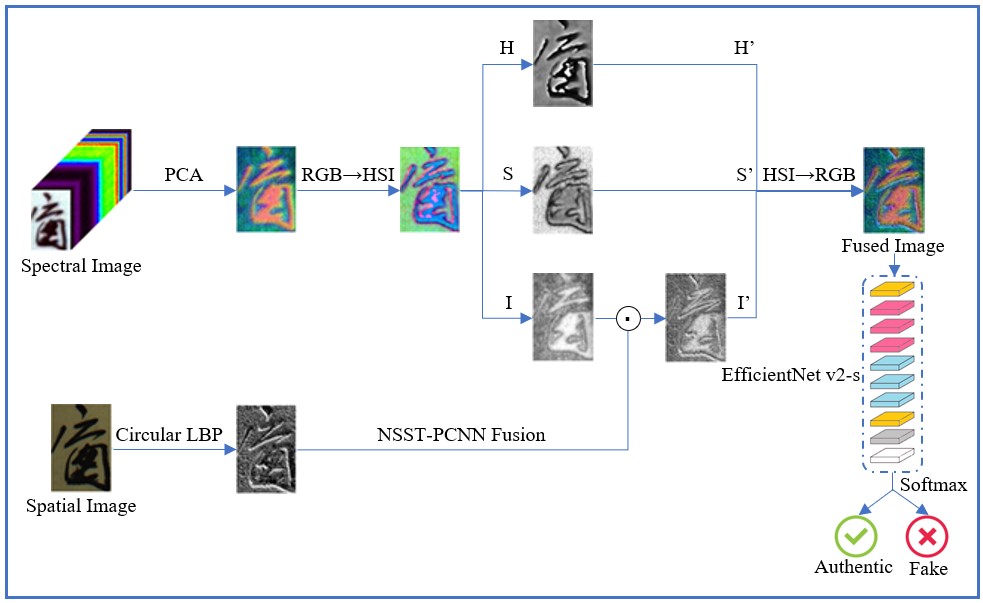Associate Prof. ZHANG Pengchang and Associate Prof. QIU Shi, leading a research team at the Xi'an Institute of Optics and Precision Mechanics, Chinese Academy of Sciences, have devised a painting authentication method based on hyperspectral imaging. This innovation aims to verify the hyperspectral images of traditional paintings using multi-scale spatial-spectral feature fusion and convolutional neural networks.
The study was published in Computers and Electrical Engineering.
Artworks carry enormous cultural and economic value. There has been a notable increase in cases where counterfeit paintings are sold as authentic in the art market, leading to considerable upheaval in the realm of art collection. Computer vision techniques offer a promising avenue for experts seeking efficient and dependable assessment tools. Distinguishing genuine artworks from counterfeits based solely on visible light images has become increasingly difficult, particularly with advancements in forgery techniques in recent times.
This research explores the feasibility of authenticating paintings by integrating high-spectral images with high-resolution spatial images. A push-broom digital scanning system was employed to capture high-resolution and high-spectral images of both authentic and fake paintings. Surface texture and spectral data from Chinese characters within the paintings were extracted using circular local binary pattern (LBP) and principal component analysis (PCA), encompassing spatial and spectral dimensions.
Subsequently, a methodology leveraging non-subsampling Shearlet transform (NSST) and pulse-coupled neural network (PCNN) was utilized to fuse spatial and spectral characteristics into pseudo-color images, generating a dataset of feature data for genuine and counterfeit paintings. EfficientNet v2 was then trained to differentiate between authentic and counterfeit paintings.
Experimental results exhibit that this approach achieved 90.8% accuracy on the test dataset, marking a 3.5% improvement over the current leading three-dimensional convolutional neural network (3D-CNN) method.
Associate Prof. ZHANG Pengchang said, “The findings demonstrate that hyperspectral imaging technology, alongside the proposed algorithm, exhibits promising potential for application in the authentication of paintings.”

Visual results of the algorithm in the study (Image by ZENG Zimu)
Download: